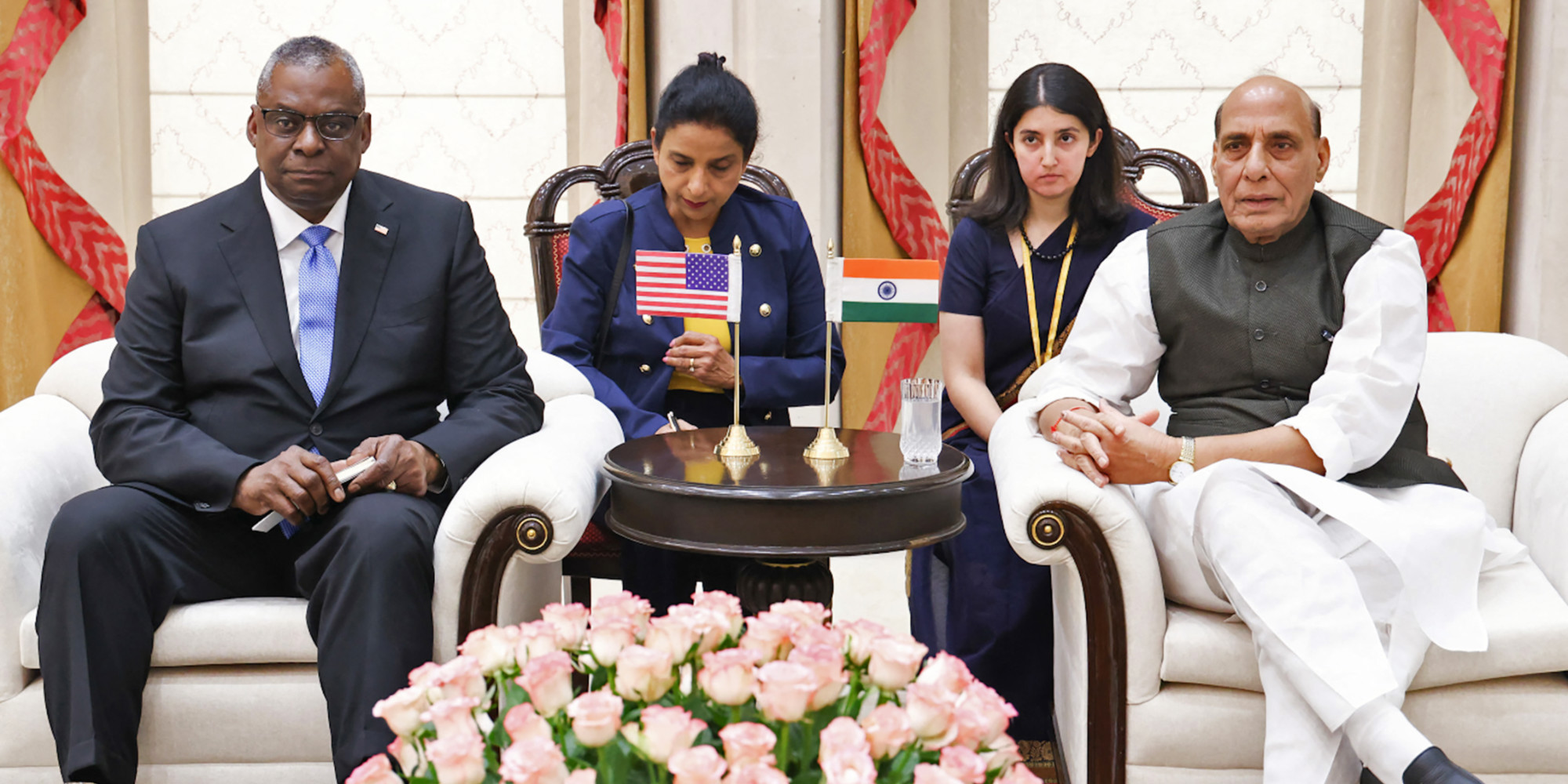The United States and India agreed on a roadmap for military-industrial cooperation on Monday, as New Delhi seeks to reduce its reliance on Russian weaponry and amid tensions with Beijing. “We have set out an ambitious new roadmap for defense industrial cooperation that will accelerate priority co-development and co-production projects,” Lloyd Austin, US Secretary of Defense, told Reuters. outcome of his visit to the Indian capital.
The visit is part of an Asia tour that has previously taken him to Japan and Singapore, in the face of China’s growing influence and an increasingly belligerent North Korea. But analysts have warned that these promises must be backed by concrete action.
New Delhi and Moscow have been allies for decades, with Russia being by far India’s main arms supplier. Today, India, which has never condemned Russia for its invasion of Ukraine, is seeking to end this dependency in the military field, both by expanding its sources of arms imports and by increasing its national production.
“Advanced technologies”
Western countries, including the United States and France, are negotiating multi-billion dollar deals and diplomats say India attaches great importance to technology transfer as part of any deal. The one with Washington will thus make it possible to accelerate technological cooperation and co-production, in particular in air combat and land mobility systems, the “submarine domain” and intelligence, surveillance and reconnaissance, according to the US Department of defense.
This initiative “aims to change the paradigm of US-Indian defense sector cooperation”, he added, and “could provide India with access to advanced technologies and support the plans for modernization of Indian defence”. The Indian Ministry of Defense clarified that the discussions were “in particular focused on identifying ways to strengthen industrial cooperation” with Washington, including “the co-development of new technologies and the co-production of existing and new systems”.
India’s increased security cooperation with Western countries and its longstanding defense ties with Russia from where it imports oil have placed New Delhi in a delicate diplomatic posture. But analysts said they would wait to see if the deal was anything more than rhetoric. Hopes that Lloyd Austin would hint at technology transfer to India and a deal on the Predator military drone were dashed, noted Rahul Bedi, an Indian defense industry analyst.
“Bullying”
“We have already heard this many times from the various (US) defense secretaries, as well as from the Indian side,” the analyst told AFP. “But unless something concrete emerges, I remain skeptical. The good conduct (of Indo-US relations) must be backed by firm contracts, firm assurances,” he added. India is seeking to develop closer ties with in particular the United States, Japan and Australia, members of the Quad, which themselves are courting it against China.
Washington and Beijing engage in fierce diplomatic, military, technological and economic competition, while relations between China and India are marked by territorial and trade tensions. Lloyd Austin, speaking to reporters after meeting his Indian counterpart Rajnath Singh, insisted that the strengthening of partnerships with New Delhi took place against a backdrop of “intimidation” and “coercion” from China, against the backdrop of Russia’s “aggression of Ukraine”.
Lloyd Austin’s visit to India precedes a trip by Indian Prime Minister Narendra Modi to Washington in June. The United States is “committed to working closely with India to support our shared vision of a free and open Indo-Pacific,” Austin added. But the American secretary insisted that Washington was “absolutely not trying to establish an equivalent of NATO” in the region.
